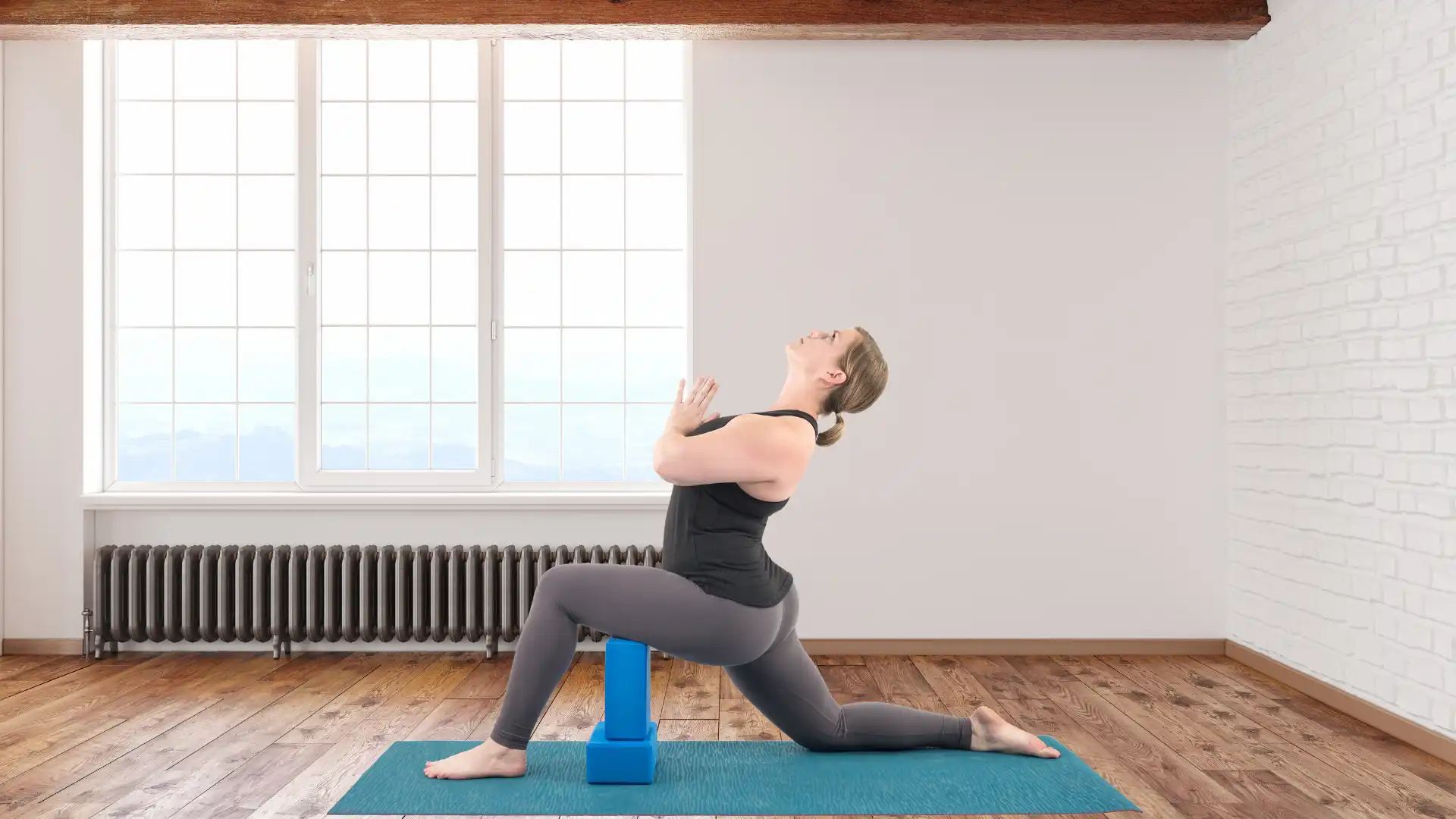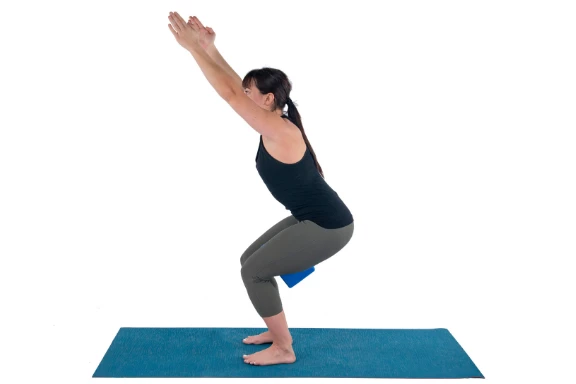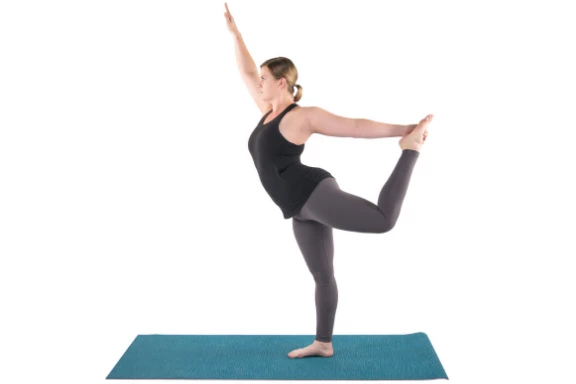How Your Quadriceps Can Cause Pain: 3 Yoga Poses That Can Help

 The quadriceps muscle group is a group of four muscles on the front side of the legs. These include the vastus lateralis, the vastus medialis, the vastus intermedius, and the rectus femoris. The name “quadriceps” means “four-headed” in Latin. They are often referred to as the “quads.”
The quadriceps muscle group is a group of four muscles on the front side of the legs. These include the vastus lateralis, the vastus medialis, the vastus intermedius, and the rectus femoris. The name “quadriceps” means “four-headed” in Latin. They are often referred to as the “quads.”
This muscle group contains four separate muscles, which collectively make up one of the largest muscle groups in the body. Their attachment points are on the front of the pelvis and the top of the thigh bone as well as on the shinbone and around the knee via the quadriceps tendon.
Their primary job is to extend the knee. Their role in propelling our bodies in activities such as walking, running, and many other physical activities means they get a great deal of use. But sitting too long causes them to become tight and can weaken them.
When the quadriceps are tight, they can create issues in numerous ways:
-
Back problems because tight quads pull down on the front of the pelvis, causing it to come into an anterior (forward) tilt
-
Knee issues because of these muscles’ insertion onto the quadriceps tendon, which is attached to the kneecap
-
Hip pain because they can cause an anterior or forward pelvic tilt
-
Hamstrings can overstretch to accommodate the tension of the quads, the opposite muscle group.
When looking for root causes of issues in the low back, hips, and knees, working with the quadriceps can sometimes provide some relief. Some of these issues can be minimized or mitigated by creating a balance between strength and mobility in the quads.
3 Yoga Poses That Can Help Create Strength and Mobility in the Quadriceps
1. Lunges.  A variety of different lunge poses can help create more mobility in these muscles. Knee-down lunges like Anjaneyasana (Crescent Lunge Pose) and a Crescent Lunge variation such as High Lunge Pose are both excellent options. Doing both versions will target different portions of this muscle group for a more significant impact. Alignment is key in order to get the best possible quad stretch out of a lunge.
A variety of different lunge poses can help create more mobility in these muscles. Knee-down lunges like Anjaneyasana (Crescent Lunge Pose) and a Crescent Lunge variation such as High Lunge Pose are both excellent options. Doing both versions will target different portions of this muscle group for a more significant impact. Alignment is key in order to get the best possible quad stretch out of a lunge.
To Practice Crescent Lunge:
-
Begin from a kneeling position.
-
Step one leg forward and place the foot somewhat forward of the knee.
-
Be sure to keep your pelvis in a neutral position (not tilted forward).
-
Draw your abdominal muscles inward.
-
Keep your shoulders stacked over your hips.
-
As you shift your hips forward, press back through the heel of the foot of the back leg to create as much length through the leg as possible.
-
Take several deep breaths, and then return to a kneeling position.
-
Repeat on the other side.
2.  If you have noticed weakness in your quadriceps or you have to sit for a great deal of time, try incorporating Utkatasana (Fierce Pose) into your yoga practice. This pose has many variations, all of which create strength in the quads.
If you have noticed weakness in your quadriceps or you have to sit for a great deal of time, try incorporating Utkatasana (Fierce Pose) into your yoga practice. This pose has many variations, all of which create strength in the quads.
To Practice Fierce Pose:
-
Stand in Tadasana (Mountain Pose).
-
Bend your knees, tilt your pelvis forward, and then lower your hips back and down. Your torso will lean slightly forward as you lower your hips.
-
Keep your spine neutral, keeping your back from arching.
-
Your arms can be raised alongside your head, in Anjali Mudra (Prayer Pose) or a low “V” position.
-
Hold the pose as you breathe.
-
Take several deep breaths, and then straighten your knees and return to Tadasana.
3.  Natarajasana (Dancer’s Pose or Standing Bow Pose) helps to both lengthen and strengthen the quadriceps. The quads in the standing leg will strengthen and the same muscles on the back leg will stretch.
Natarajasana (Dancer’s Pose or Standing Bow Pose) helps to both lengthen and strengthen the quadriceps. The quads in the standing leg will strengthen and the same muscles on the back leg will stretch.
One of the great things about Dancer’s Pose is that it can be modified to meet your needs. You can incorporate a strap to help reach your back foot. You can also do the pose next to a wall to assist with balance. Or you can lie on your side on the floor if standing is not an option.
To Practice Dancer’s Pose:
-
Stand in Tadasana.
-
Shift your weight onto one leg and bend your other knee, lifting your foot off the floor.
-
Reach back for your foot or use a strap to loop around your foot and hold it in your hand.
-
Then keeping your spine upright, kick the foot of your bent leg back, so the knee of that leg begins to move back behind your body.
-
Keep your hips somewhat level from side to side.
-
Your opposite arm can be raised overhead or on a wall for balance.
-
Take several breaths before returning to Tadasana.
-
Repeat on the other side.
Study healthy aging with YogaUOnline and Tias Little: Youthful Spine, Youthful Body: Yogic Keys to Longevity & Vitality.

 Emily is passionate about yoga, anatomy, and sustainable movement. She is a yoga teacher, IAYT certified yoga therapist, and massage therapist. Emily has created both a 200 and 300-hour yoga teacher training program focused on therapeutics and a solid understanding of how yoga asanas can be adapted to fit anyone’s needs. She also has written CE trainings to help teachers fill in the gaps after graduating from Yoga teacher training and their real-world experiences. She believes that Yoga is not just for skinny, flexible people. Yoga is for everyone, regardless of size, age, and health. One of her goals is to help yoga and movement teachers gain high-level training and education so they can in-turn change the world through yoga. She has over 2500 hours of training and well over 4000 hours of teaching experience. Her teaching has ranged from working with professional athletes to those confined to chairs.
Emily is passionate about yoga, anatomy, and sustainable movement. She is a yoga teacher, IAYT certified yoga therapist, and massage therapist. Emily has created both a 200 and 300-hour yoga teacher training program focused on therapeutics and a solid understanding of how yoga asanas can be adapted to fit anyone’s needs. She also has written CE trainings to help teachers fill in the gaps after graduating from Yoga teacher training and their real-world experiences. She believes that Yoga is not just for skinny, flexible people. Yoga is for everyone, regardless of size, age, and health. One of her goals is to help yoga and movement teachers gain high-level training and education so they can in-turn change the world through yoga. She has over 2500 hours of training and well over 4000 hours of teaching experience. Her teaching has ranged from working with professional athletes to those confined to chairs.



